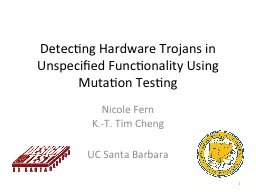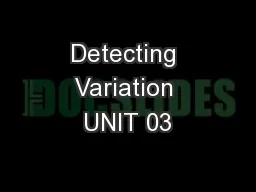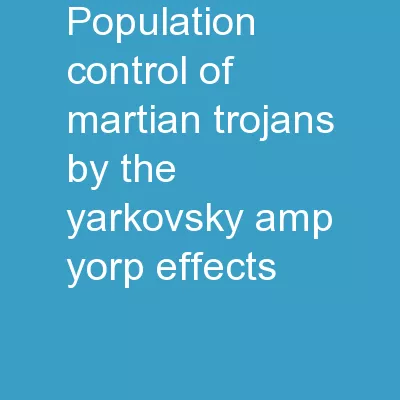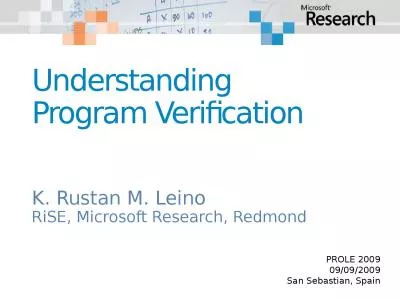PPT-Detecting Hardware Trojans in Unspecified Functionality Usi
Author : giovanna-bartolotta | Published Date : 2016-08-06
Nicole Fern KT Tim Cheng UC Santa Barbara 1 Main Contributions Information leakage Trojan only modifying unspecified functionality Mutation testing based detection
Presentation Embed Code
Download Presentation
Download Presentation The PPT/PDF document "Detecting Hardware Trojans in Unspecifie..." is the property of its rightful owner. Permission is granted to download and print the materials on this website for personal, non-commercial use only, and to display it on your personal computer provided you do not modify the materials and that you retain all copyright notices contained in the materials. By downloading content from our website, you accept the terms of this agreement.
Detecting Hardware Trojans in Unspecified Functionality Usi: Transcript
Download Rules Of Document
"Detecting Hardware Trojans in Unspecified Functionality Usi"The content belongs to its owner. You may download and print it for personal use, without modification, and keep all copyright notices. By downloading, you agree to these terms.
Related Documents














